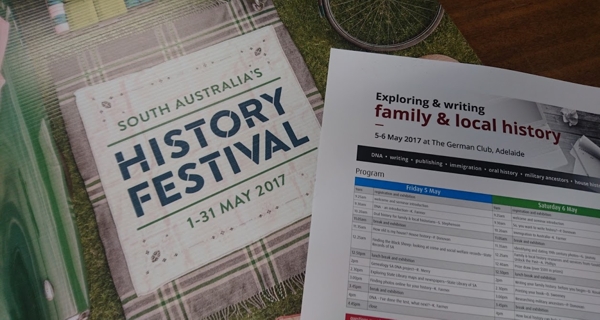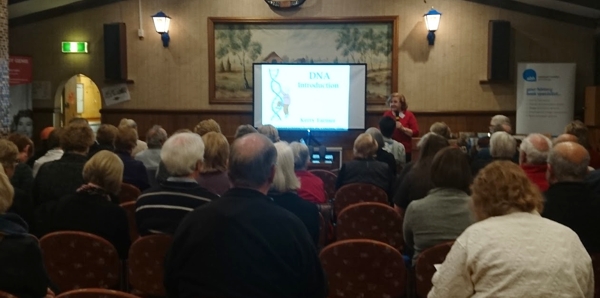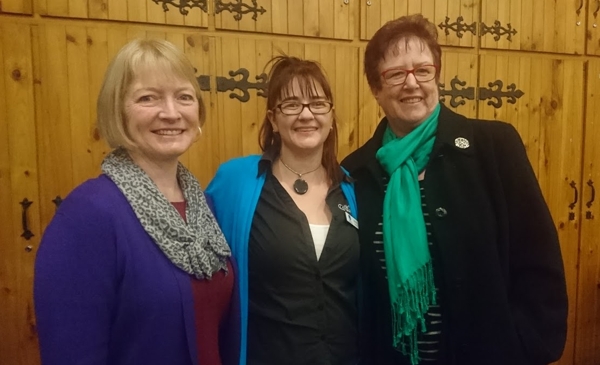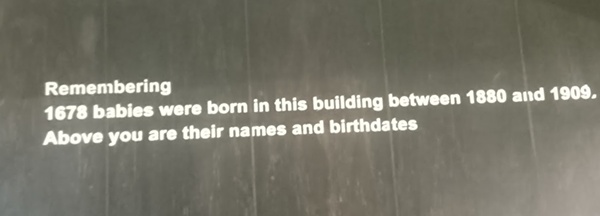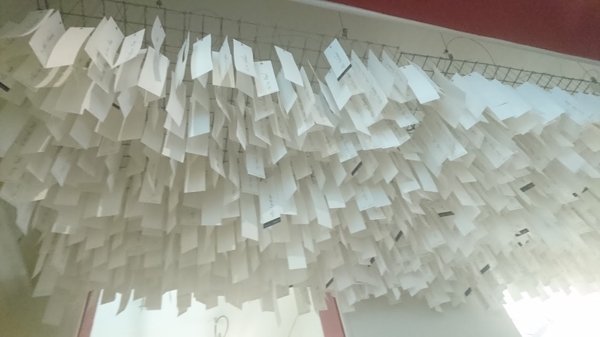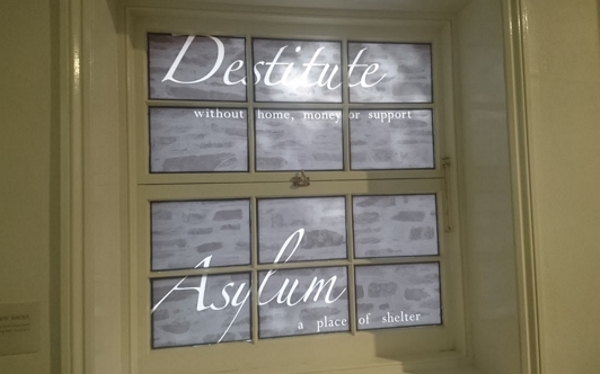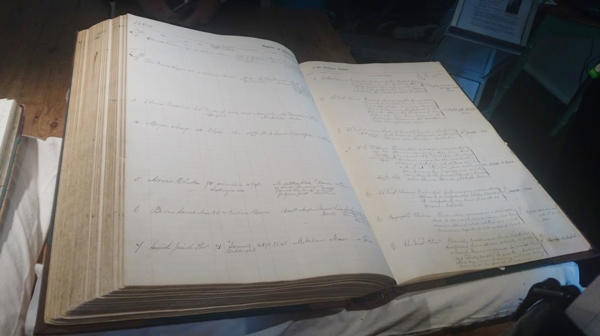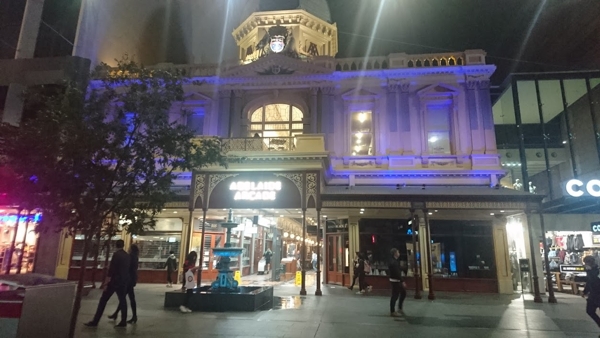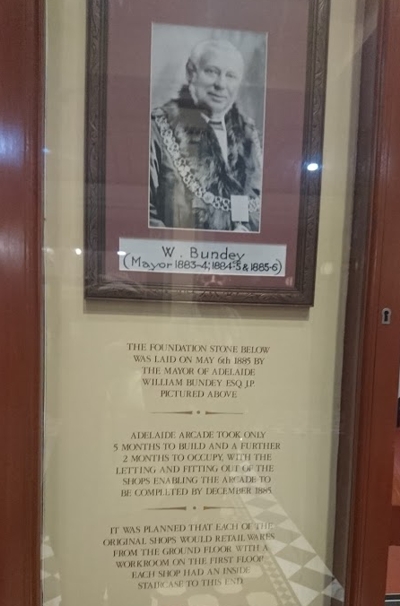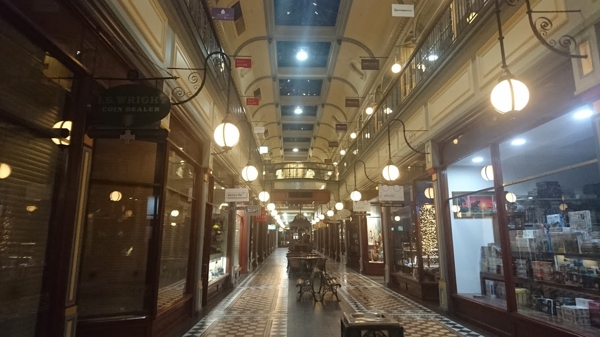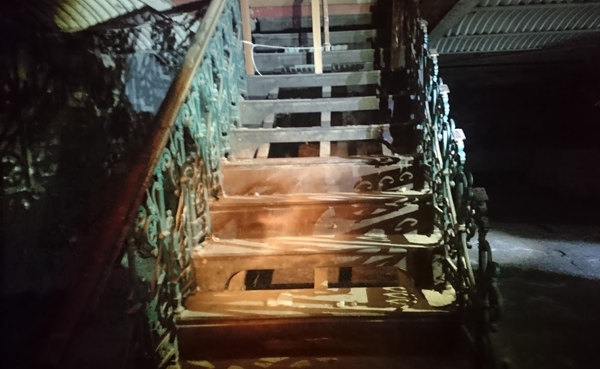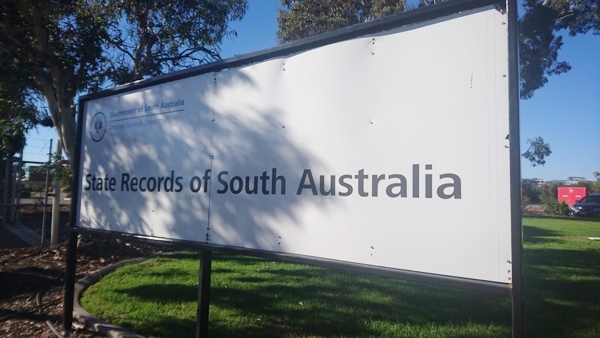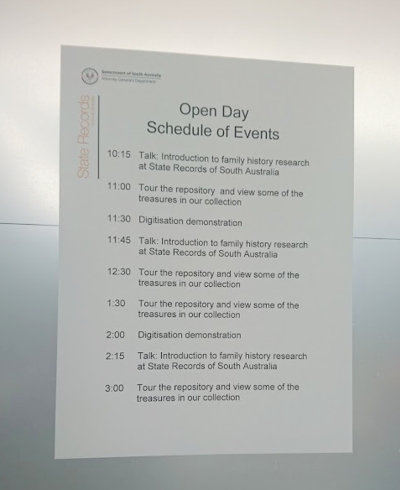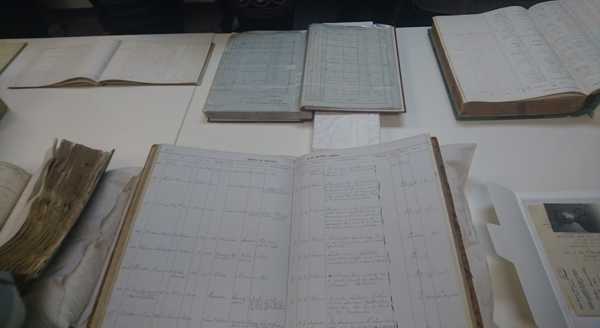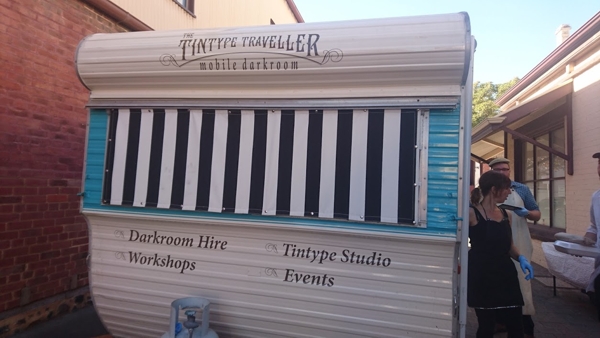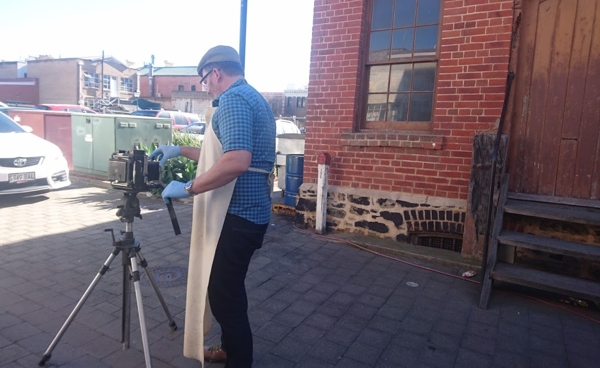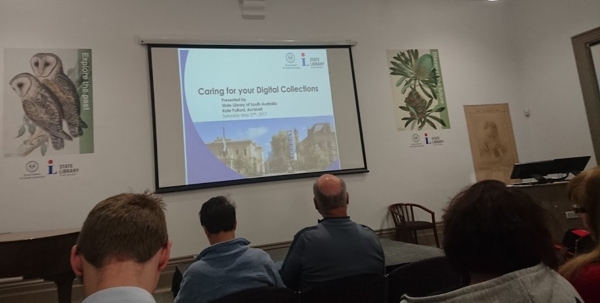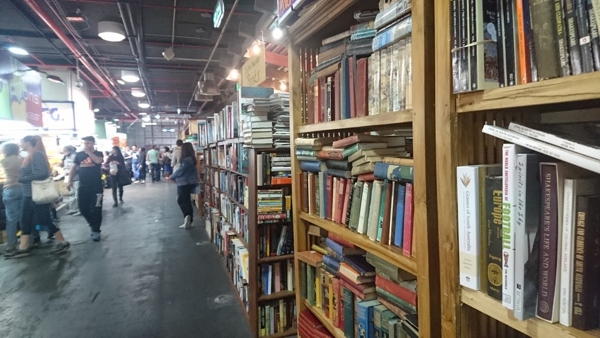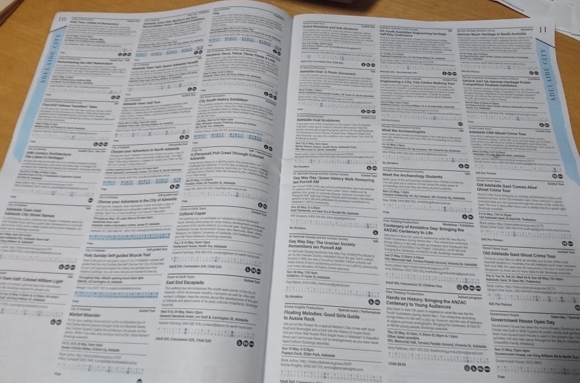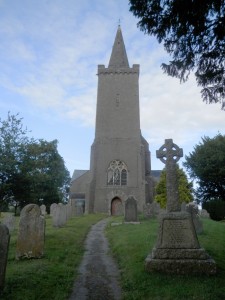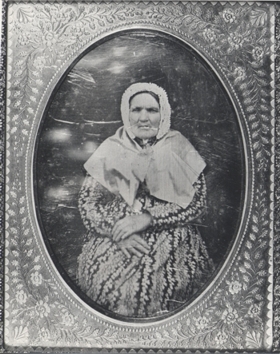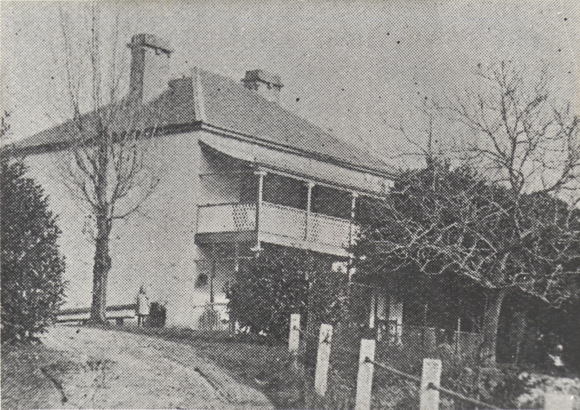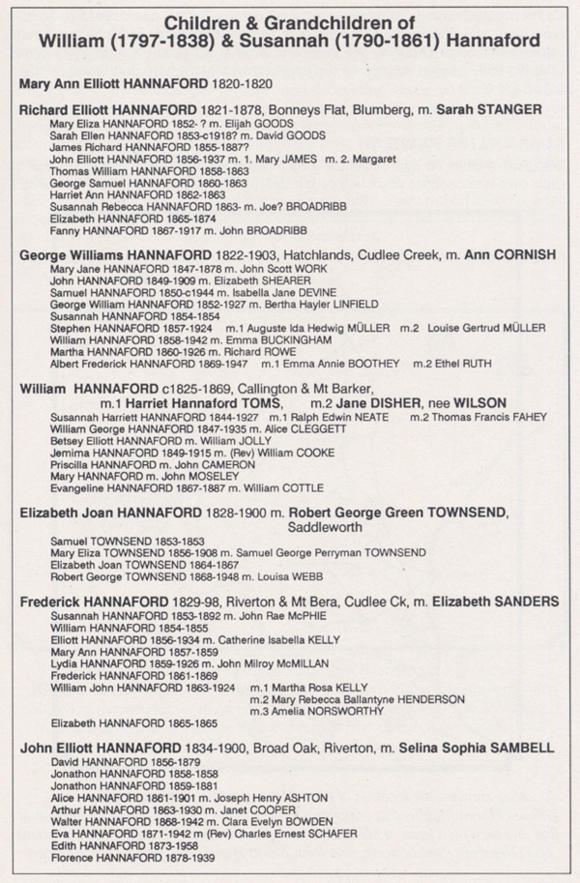They Died in the Asylum
Parkside Lunatic Asylum is the original name for the building that was subsequently renamed to Parkside Mental Hospital, then Glenside Hospital and more recently Glenside Health Services.
Situated on Fullarton Road at Glenside, it is in one of Adelaide’s leafy eastern suburbs and is by outwards appearance, a magnificent place. But the asylum was far from that for the inmates at the asylum, and sadly for so many it was their last home.
The Parkside Lunatic Asylum was opened in 1870 initially housing men, but by the 1880s men, women and children were being housed there. It housed not only those suffering from mental illness, but also people with intellectual disabilities and medical conditions like epilepsy.
While browsing around on Trove, I found this article in the Adelaide Advertiser, 14 January 1910, and was saddened by the fact that there was so many who even in a six month period, died without family nearby.
– Wilhelm Heinrich Dittich (71), July 5, pulmonary disease and cardiac failure
– Judy (aboriginal female), (60), July 10, gastritis and cardiac failure
– Guiseppe Castagneth (58), August 8, apoplexy and cerebral disease
– Rosalie Russell (63), August 20, hepatic disease and ascites
– Theodosia Byrne (78), August 20, apoplexy and senile decay
– Sarah Jane Hayes (35), August 29, phthisis and exhaustion
– Bridget (alias Annie) Evans, (42), August 29, suicide by hanging
– William Conway (36) September 1, general paralysis and apoplexy
– Dora Knout (80), September 2 cardiac disease and senile decay
– William Carruthers (75), September 5, diarrhoea and senile decay
– Thomas Paddock (70) September 17, cardiac disease and senile decay
– Alfred Perfect (48) September 18, apoplexy and paralysis
– George Henry Holmes (52), September 26, pulmonary tuberculosis and exhaustion
– Isaac Mowatt (69), November 2, empyæmia
– Mary McNulty (60), November 13, Pulmonary tuberculosis and exhaustion
– Oscar Genske (55), December 6, cardiac disease and paralysis
– John Kew Dawson (69), December 10, senile decay and exhaustion.
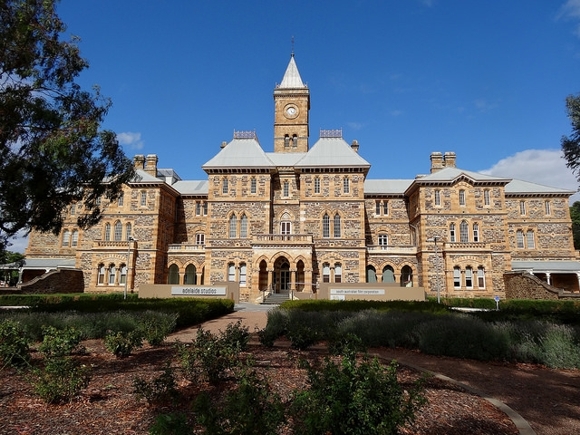
Glenside Hospital, formerly the Parkside Lunatic Asylum, taken 2015
Source: denisbin Flickr
– Parkside Lunatic Asylum on Find & Connect
– Untold Stories of the Parkside Lunatic Asylum on Weekend Notes
South Australia’s History Festival 2017 in Review
Well May came, and May went … and to say it flew by is an understatement. So that means bye, bye to South Australia’s History Festival for another year.
As far as attending events, I did better this year than I have in the past, as I planned ahead and made sure I booked into things early, and I even managed to get a little time off to go to some but I had to stop looking at the program, as I was just getting annoyed at all the awesome things on, that I couldn’t get to.
Anyway I promised a mini review of the events I went to, so here goes …
Friday 5 May 2017 & Saturday 6 May 2017
Exploring & Writing Family & Local History seminar
organised by Unlock the Past
This seminar was organised by my work, so I was partly working at the event (manning the Gould Genealogy display tables). But as our tables were in the same room the talks, I got to hear them too. There was 16 talks packed into 2 days, so it was pretty full on, but the talks were great, and much was learned. There was a great turnout for the event with a number coming from country South Australia, and even a few from interstate. I’m not going to write a review of each talk, but there was many great points gained from them. House history, maps, DNA, writing your history, oral history, photos, black sheep and so much more was covered. As a bonus I got to catch up with two fellow geneabloggers, and that’s a real treat as there doesn’t seem to be too many of us in South Australia.
Monday 8 May 2017
Meet the Old Colonists photographs display
organised by the State Library of South Australia
When I heard about this display, I knew it was something I had to go and see. … and it was totally worthwhile. These huge photographs are a collage of around 500 men and 500 women all who were ‘pioneers’ of South Australia (meaning they arrived in South Australia prior to 1841) and were members of the Old Colonists’ Association. I do have a number of ancestors who fit into the ‘old colonists’ category, but I don’t know if they were members of the Association. However I did find a 3x great grandpa pictured there, so that was very cool. There is an amazing story behind these incredible pictures. You can read more about them here: http://www.gouldgenealogy.com/2017/05/meet-old-colonists-south-australias-pioneers/
This display wasn’t put up “just” for History Month. My understanding is that it’s there permanently. So whenever you’re in the city and near the State Library of SA, pop in, go upstairs and check out these spectacular photos for yourself.
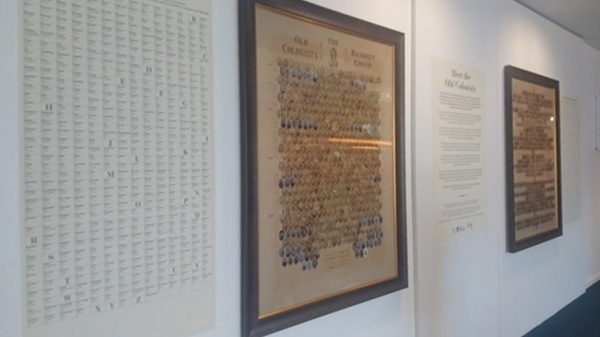
South Australia’s Old Colonist’s photos at the State Library of South Australia. The men’s photo is the one on the left, with the women’s photo on the right.
Monday 8 May 2017
Bringing the Past to Life: Destitute Asylum
organised by the Migration Museum
Destitute records aren’t records I’ve ventured into as yet, but I do know that at least one family member found herself in and out of the system, so I thought this would be a good talk to go and learn about them. Held in the city at the Migration Museum (which is the where the old Destitute Asylum used to be), staff from State Records SA came to show and discuss the types of records you’ll find they hold that relate to those who were at the Asylum. They explained how records at the Destitute Asylum are often the only record available for that person. Truly incredible, and very sad, but these records are amazing. We also had a tour of the a portion of the Migration Museum, which used to be the Women’s Lying-In Hospital, and head about the babies that were born and died there.
Thursday 18 May 2017
Adelaide Arcade Ghost Tour
organised by Adelaide’s Haunted Horizons Ghost Tours
Doing a tour of the Adelaide Arcade was something that I’d wanted to do last year during History Festival, but missed out. So this time I booked early. Mr Lonetester even came with me to this, and we joined a group of others for a two hour history lesson and walking tour of the Adelaide Arcade.
The tour started at 7.30pm on a Thursday night, after all the shops had closed, and that itself was an interesting feeling being the only ones in Rundle Mall at that time. We learnt about when and how the place was built. We learnt that it’s the oldest Arcade in Australia having opened in 1885, and that incredibly it took only 5 months to build? Along with the 50 shops downstairs with housing for the shopkeepers upstairs, it was also the first (or one of the first) to have electric lighting in Adelaide, so it was very fancy indeed! And did you know that there were public baths in a portion of the Arcade? What about the downstairs tearooms?
And have you heard of Francis Cluney? He was the caretaker of the Arcade until a tragic accident there in 1887. It is said that his ghost roams the corridors there. The security guard who came with us on the tour, talked about strange things he’s encountered while working there, along with stories from current tenants.
We were taken in side corridors, storage rooms, upstairs, down into the basement (which was the old tearooms) and more. Unless you hear the history of this place as you tour it, you really don’t appreciate it.
I am now completely fascinated by this place and can’t believe I didn’t know the history of it before. Anyway stay tuned for more on the Arcade, there’s amazing history and stories here which I’ll write about in more detail.
Sunday 21 May 2017
Archives Open! State Records SA Open Day
organised by State Records SA
The Open Day at State Records started at 10am and went for most of the day with talks, tours and a bbq lunch. As the talks and tours were repeated I found I didn’t need to stay all day, which worked out well as I had another event I wanted to get to.
Anyway the State Records SA was established back in 1919 “to collect and preserve the archival records of the South Australian State Government”. Since then they now have over 70 kilometres of records on shelves in their collection. They are the place to look for immigration records, colonial secretary’s records, land records (titles and maps), schools, social welfare and hospital records, law enforcement (including prison and trials), public employees (including teachers, railway workers and more), local government records including rate books, and WW1 photos. They have a collection of photos of over 3000 South Australian’s who were in WW1. These are in the process of being digitised and put up on Flickr.
If you haven’t been to State Records SA before or haven’t been on the “behind the scenes” tour … it’s mind blowing. And I have no doubt that while it seems large, I’m sure it’s small compared to many other archives interstate and around the world. Still it is awesome to see so many of our State’s records being preserved.
And it’s a good reminder of just how many records AREN’T online, and that I should visit them more.
Sunday 21 May 2017
The Tintype Traveller
organised by the South Australian Maritime Museum
The Tintype Traveller was part of the “Retro Lens” event put on by the South Australian Maritime Museum, where they had a whole day dedicated to learning about and participating in vintage photography.
My interest though was purely in visiting the Tintype Traveller to get an old tintype portrait picture taken. The Tintype Traveller is a vintage caravan that has been converted into a custom-designed darkroom, which allows photographers the ability to use traditional photographic processes on location.
So I went to Port Adelaide and found their caravan, but what I didn’t count was them having been booked up in advance. So alas, I didn’t get my picture taken which was disappointing. However the lovely people from the Tintype Traveller let me stand and watch the process of developing the tin photos in their caravan, so that was very cool.
Anyway I’ll just have to keep an eye out and see where they’ll be taking their caravan next, and try to get in.
As I don’t have any tintype photographs to show you, I’ll simply direct you to a video that they have produced, and to their Facebook Page, which has a number of pics they’ve taken. And you can read more about them here.
Sunday 27 May 2017
Caring for your Digital Collections talk
organised by the State Library of South Australia
While I believe that I’m fairly au fait with keeping things safe and up to date as far as storage and accessing digital records etc. I felt this would be good to go to, as there’s always something to learn.
Kate Pulford who is an Archivist at the State Library of SA says that we “need to monitor and protect your digital memories”. Emails, websites, photos, scans all classify as a “digital collection”. A key phrase she used was that “digital information is fragile. Once it is list, it can be lost forever”. So she suggests making a plan to review your storage methods every 3-5 years and migrate to a newer method as required. For instance who has backups on old 31/4″ floppy disk? Can you still access them? What about CD-ROMs? So many computers these days come without a CD drive, so it won’t be long before they are obsolete. She also showed those at the talk her method of recording what was what on each storage device and when it was last backed up. For this she simply uses an Excel spreadsheet.
And just for information she did advocate using the cloud, but only as a 3rd backup option. Instead use option 1 and 2 (external harddrives placed in separate locations) first.
Sunday 27 May 2017
Adelaide’s Pop-up Bookshop
organised by Adelaide’s Pop-Up Bookshop
This was one event I have to say I was very disappointed with … advertised as :
“Hundreds of South Australian history books have been specifically brought in to be explored, including a rare copy of Lost Adelaide – a treat for history buffs! Transport yourself to other times and places with histories on local regions and families. Books available for viewing and purchase.”
Held in Adelaide’s Central Market I found the range the Pop-up Bookshop had was very limited, and the prices seemed pricey. But anyway, I’m sure they would have appealed to some. But honestly I found the Central Market Bookshop (also in the markets) more interesting.
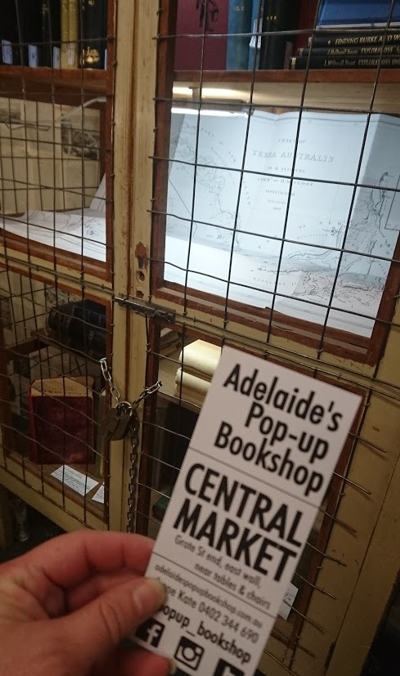
Adelaide’s Pop-Up Bookshop in the Central Market. By the look of that lock I assume there were the super-duper pricey books
As always there was at least another 100 things I would have loved to have gone to, but time and work didn’t allow it … still I got to go to some, and enjoyed learning more about records and South Australia’s history.
But that’s it for another year of South Australian’s History Festival events. With 356 different organisers, and over 600 events held it was a HUGE month. I just hope that even a portion of them will consider holding an event (or even the same event) for National Family History Month in August, that would be awesome.
And one last shoutout must go to the History Trust of SA, who are the co-ordinators of this event. Without their organisation and promotion, History Month simply wouldn’t happen. THANKYOU … you’ve done an awesome job, and I’m sure that it’s because of the backend organisation that the event continues to grow each year.
South Australia’s History Festival 2017 is Coming!!
May is the month that all South Australian history-lovers look forward to, as it is South Australia’s History Festival, which really is just a month-long history-fest!
To say that I was excited to get a copy of the SA History Festival program guide last weekend is an understatement. I’ll admit that I’ve already gone through it all (only once so far), and have put post-in notes on a heap of events, and even printed out a calendar for the month so I can keep track of what’s on when, and hope that not too many double up.
South Australia’s History Festival is presented by the History Trust of South Australia, and it began its life as South Australia’s History Week back in 2004, and changed to a month-long event in 2011. This proved to be a good move, as it has grown in popularity every year since. And with over 600 events from 340 organisers this year, the interest continues to grow.
With events held not only in Adelaide city, but also Adelaide Hills, the Barossa and rural regions of the state, even Kangaroo Island, more people are learning about the history of this beautiful state of ours.
There’s an absolute overload of events on for history-lovers, and even non-history lovers. From talks and seminars, to guided walks, and bus tours. There’s workshops and exhibitions, open days at various places, and more.
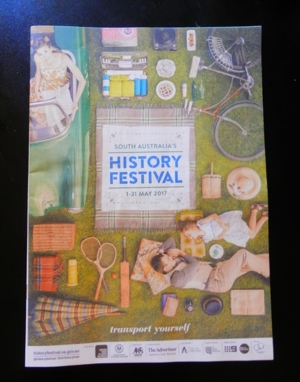 From making jam the old way, to walks in cemeteries and Adelaide’s old buildings. From learning how to create audio and visual presentations with oral history recordings, to learning the stories of South Australia’s pioneer settlers, seriously there is something for everyone.
From making jam the old way, to walks in cemeteries and Adelaide’s old buildings. From learning how to create audio and visual presentations with oral history recordings, to learning the stories of South Australia’s pioneer settlers, seriously there is something for everyone.
I have so many events I hope to get to, but unless I can take all of May off of work, sadly it won’t happen. Still I’ll get to some, and I look forward to those.
But my advice to you if you’re in South Australia, do yourself a favour, checkout their website. I bet you’ll find something you’d love to go to. The History Festival team have all the events listed on their website, and they have a planner that you can add events that you’re interested in to help you keep track of what you’re wanting to attend. And they even have an app!
For more on South Australia’s History Festival, check out their website, and elsewhere on social media!
Web: www.historyfestival.sa.gov.au
Facebook: www.facebook.com/HistoryFestival
Twitter: @historyfestival
Instagram: instagram.com/historyfestival
Hashtag: #SAHistoryFest
My First Hannaford Family in Australia
For Australia Day this year I decided to write about the Hannafords, who are one of my immigrating families. Or more specifically I should say, about Susannah Hannaford (nee Elliott), who is truly the matriarch of the family, and her children.
I admit I am in awe of Susannah, in some ways anyway. She was a widow by age 48, not an easy thing for anyone, but then to pack up all of your belongings and move to the other side of the world, to a colony that had only been founded a few years before, with her six children, leaving her family, friends and whole life behind, to start again from scratch. I can’t even begin to think of what that would be like or how she managed it. But she survived. So did her children, and now her descendants number the thousands.
But let’s go back a little bit first.
Back in Devon …
Susannah Elliott was born in 1790 in the market town of Totnes, in Devon, England. Meanwhile the Hannaford family (the ones I’m writing about anyway), grew up just four miles away in the little town of Rattery. I mention that as the Hannaford name in Devon is much like Smith or Brown everywhere else. Hannafords are everywhere!
When Susannah was 30 years old, she married William Hannaford (one from the neighbouring parish in Rattery), and who was actually a few years younger than her. Sadly William died at age 42, leaving Susannah with six children ranging in age from 17 down to 6.
Devon at that time (actually probably England at that time) had limited employment opportunities, and with high taxes (land tax and window tax for instance), it would seem that emigrating to a new land offered better prospects than staying in Devon.
The Voyage and Arrival …
So in 1840 Susannah and her clan together with 164 other passengers, boarded the “Brightman”, which was a three-masted barque which sailed from London, to Plymouth, and on to South Australia, making a quick voyage in just 106 days. Again, I can’t envisage what that would have been like. The closest I’ve been to this is a large cruise ship for 21 days which doesn’t even vaguely compare in any way whatsoever!
The Verco’s were also aboard the Brightman, and the following is an extract from the “Early Recollections of Sir Joseph Verco” which was written around 1930.
“The Brightman was a dry and comfortable ship. The bunks were arranged athwart ships along the sides of the vessel leaving a passage down the middle of the ‘tween decks. If in bed the passengers had to shift pillows from one end of the bunk to the other else he would be lying with his head down and his feet at a much higher level. Captain Nockells was a religious man conducting regular Sunday services, and he never failed to close with Psalm 139 verses 7-12. He would then invoke the blessing of God on the ship and those within, followed by the benediction. The Brightman made good passage of only 106 days. Keeping as much to the eastward as possible on the way south to avoid the dreaded Cap San Roque and its leeward currents. They sailed close round the Cape of Good Hope, then well to the north … and anchored in Holdfast Bay on 10 December 1840.
From the time of anchoring to the time of departure from the ship, there was a delay of seven days for some passengers. Boats transported the passengers and their luggage to land. Many floatable articles, such as wooden framed houses, manufactured and packed in England for immediate erection on landing in Australia, were simply tossed overboard and then tided to shire. All this took time and meant a long and tedious wait onboard for passengers.
When not concerned with the activity going on around them, those onboard found themselves preoccupied with thoughts of what awaited them beyond the shores amid the dense forest of trees and scrub … As it was they could see hundreds of natives moving along the shoreline. More than once they had been startled by the noise of a corroboree, one of which had been followed by fierce fighting resulting in many naked warriors being speared to death. Even at a distance it was somewhat frightening, but still more unnerving had been the screaming and yelling of the lubras as they mourned their dead.”
From the ship at Holdfast Bay (now Glenelg) it was a case of making the trip to Emigration Square in Adelaide, approximately 12 kilometers away, and with no roads. For many it was a case of walking the trip while for others they travelled by bullock dray. Emigration Square, situated on the Parklands, just west of Hindley Street contained 30-40 wooden huts in 1839-40, which were made for newly arrived emigrants to have a place to stay until they moved on.
Settling in South Australia …
The records show that the first house Susannah bought in South Australia was a 2 acre property at Unley in 1841. This was a small cottage and she established a mini farm on the land. By this time her two oldest two sons, Richard and George, went off cattle herding for the South Australian Company. And no doubt it was during one their travels that they heard of “fertile land with springs and running water 25 miles from Adelaide”. So George and his friend from the ship, James Verco, set out to find this land, and found it at Cudlee Creek, in the Adelaide Hills.
George was impressed with it, so much so that Susannah immediately bought land there, and in 1849 had a cottage built from stone quarried on the property. They named this property “Hatchlands” after the family property in Devon “Hatchland”. And this was the start of the Hannaford’s at Cudlee Creek. And today (six generations and 168 years later), they are still in the region.
As her family grew up and got their own properties, you will find descendants of Susannah’s living at Bonney’s Flat, Birdwood (Blumberg), Riverton, Saddleworth and of course Cudlee Creek (all in South Australia). And some of the property names associated with the family are ‘Broad Oak’, ‘Mount Bera’, ‘Riverside’, ‘Dingo Vale’, ‘Wattle Vale’, ‘The Briars’ and ‘Greenhills’.
The Hannaford’s have been heavily involved in the Fruitgrowers and Agricultural Associations for many years, and were known for their top class and prize winning apples. Some even winning international prizes. And I’m proud to say that today there are still family members running these generations-old apple orchards.
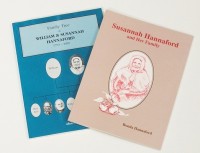 Of course Susannah and her family’s story doesn’t stop there. There are many achievements and noteworthy things from numerous descendants, but it’s too much for this post. But for anyone that does want more info on the family, I suggest getting a copy of both the following books, as they contain plenty of detail:
Of course Susannah and her family’s story doesn’t stop there. There are many achievements and noteworthy things from numerous descendants, but it’s too much for this post. But for anyone that does want more info on the family, I suggest getting a copy of both the following books, as they contain plenty of detail:
– Susannah Hannaford and her Family
– The Family Tree of William and Susannah Hannaford 1790-1990
This chart below shows Susannah and William Hannaford, their seven children (the first one died in infancy), together with their grandchildren. Seeing this you’ll understand WHY there are so many Hannaford’s around now.
Susannah Hannaford (1790-1861)
Truly a pioneer
And the matriarch of an incredible clan

